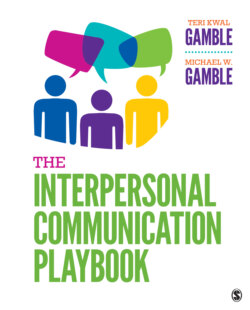Читать книгу The Interpersonal Communication Playbook - Teri Kwal Gamble - Страница 114
На сайте Литреса книга снята с продажи.
Our Perception Defines Our Reality
ОглавлениеShould we believe our eyes? To answer this question, researchers study the relationships among perception, reality, and performance. For example, psychologists have learned that when baseball and tennis athletes are playing well, they report the ball looks larger than when they are playing poorly. Golfers playing well likewise report that the cup looks bigger than when they are playing poorly.9 Perceive the ball, hole, or hoop to be larger, and you may be on your way to improving your athletic prowess—even if what you perceive is not really there.10
Today it’s so easy to alter visual images that it’s become normal to be skeptical regarding which are real and representative of reality.11 The yellow line that appears across the football field on your TV screen is added digitally. The ads you see behind home plate when watching baseball on TV are computer-generated effects. Dead celebrities appear in new commercials and reprise their roles in movies. Much of the time we are unable to tell if a photo has been digitally doctored or altered, and if we can tell, we typically are unable to say definitively what’s changed.12 Were they used in court, fake photos could pose real problems. More troubling, eyewitness testimony given during trials is wrong about one-third of the time.13 Our eyes are deceivable.
Can we believe the eyes of an eyewitness?
Design Pics Inc/Colleen Cahill/Alamy Stock Photo
